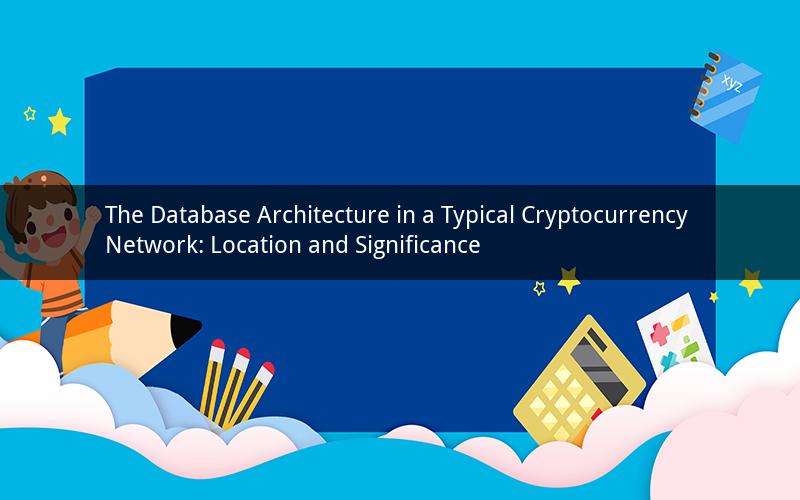
In the rapidly evolving world of cryptocurrencies, the underlying database plays a pivotal role in ensuring the integrity, security, and reliability of transactions. Understanding the location of this database within a typical cryptocurrency network is essential for grasping the overall structure and functionality of the network. This article delves into the intricacies of the database architecture in a typical cryptocurrency network, highlighting its location and significance.
1. The Blockchain: The Core Database
The foundation of a cryptocurrency network lies in the blockchain, which serves as the core database. A blockchain is a decentralized ledger that records all transactions in a chronological order. It is essentially a chain of blocks, each containing a set of transactions.
The blockchain operates on a peer-to-peer (P2P) network, where participants, also known as nodes, contribute to the network's functionality. Each node maintains a copy of the blockchain, ensuring that the database is decentralized and resistant to tampering.
2. The Database Location: Decentralization
The database, or blockchain, is distributed across all nodes in the network. This decentralized approach is a hallmark of cryptocurrency networks, aiming to eliminate a single point of failure and maintain the integrity of the database.
Nodes are geographically dispersed, making it difficult for malicious actors to compromise the entire network. The distributed nature of the database ensures that the blockchain is accessible to all participants, fostering transparency and trust.
3. The Significance of the Database Location
The location of the database in a cryptocurrency network holds several critical significance:
a. Security: Decentralization enhances the security of the database. By distributing the data across multiple nodes, the network becomes resilient to attacks and ensures the integrity of the data.
b. Immutability: Once a transaction is added to the blockchain, it becomes immutable, meaning it cannot be altered or deleted. This immutability is guaranteed by the distributed nature of the database.
c. Transparency: Since all participants have access to the blockchain, transparency is achieved. Users can verify transactions, ensuring that the network operates fairly and without fraud.
4. Consensus Mechanisms: Ensuring Consistency
Consensus mechanisms are essential for maintaining consistency across the distributed database. These mechanisms enable nodes to agree on the validity of transactions and the order in which they are added to the blockchain.
Common consensus mechanisms include Proof of Work (PoW) and Proof of Stake (PoS). In PoW, nodes compete to solve complex mathematical puzzles, and the first to solve the puzzle gets to add a new block to the blockchain. In PoS, validators are chosen based on their stakes in the network, and they are responsible for adding new blocks.
5. Challenges and Future Developments
Despite the numerous advantages of a decentralized database, there are challenges that need to be addressed. One significant challenge is the scalability of the blockchain. As the network grows, the time and resources required to process transactions increase.
To address this issue, several solutions are being explored, such as layer 2 scaling solutions and sharding. These solutions aim to improve the network's efficiency and enable more transactions to be processed in a shorter time frame.
Frequently Asked Questions:
1. What is the role of the database in a cryptocurrency network?
The database, or blockchain, in a cryptocurrency network records all transactions in a decentralized and immutable manner, ensuring the integrity, security, and transparency of the network.
2. Why is the location of the database crucial in a cryptocurrency network?
The decentralized location of the database ensures security, immutability, and transparency. It also makes the network resilient to attacks and fosters trust among participants.
3. How does the blockchain maintain consistency across a decentralized network?
Consensus mechanisms, such as Proof of Work (PoW) and Proof of Stake (PoS), enable nodes to agree on the validity of transactions and the order in which they are added to the blockchain.
4. What challenges do decentralized databases face in cryptocurrency networks?
One major challenge is scalability, as the network grows, the time and resources required to process transactions increase. Other challenges include energy consumption and the potential for centralization in certain consensus mechanisms.
5. Are there any future developments to address the challenges faced by decentralized databases?
Yes, several solutions are being explored, including layer 2 scaling solutions, sharding, and alternative consensus mechanisms like Proof of Authority (PoA). These developments aim to improve the network's efficiency, scalability, and sustainability.